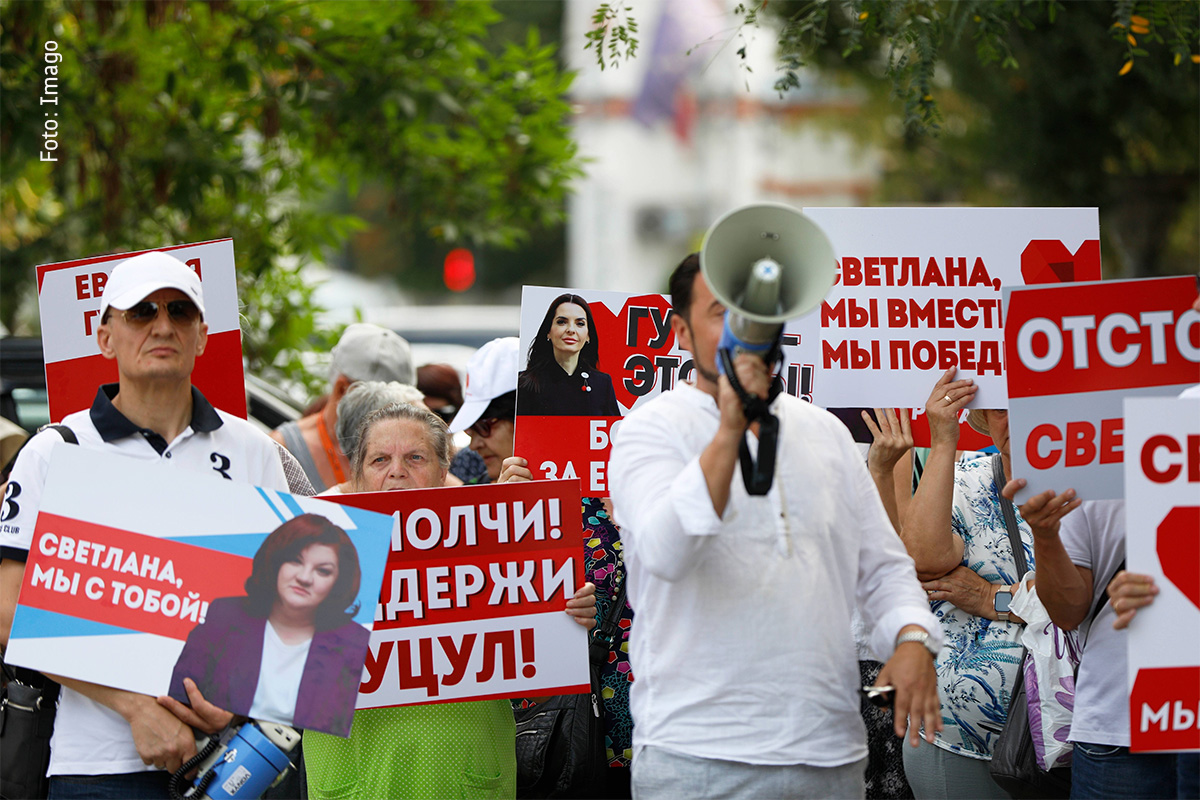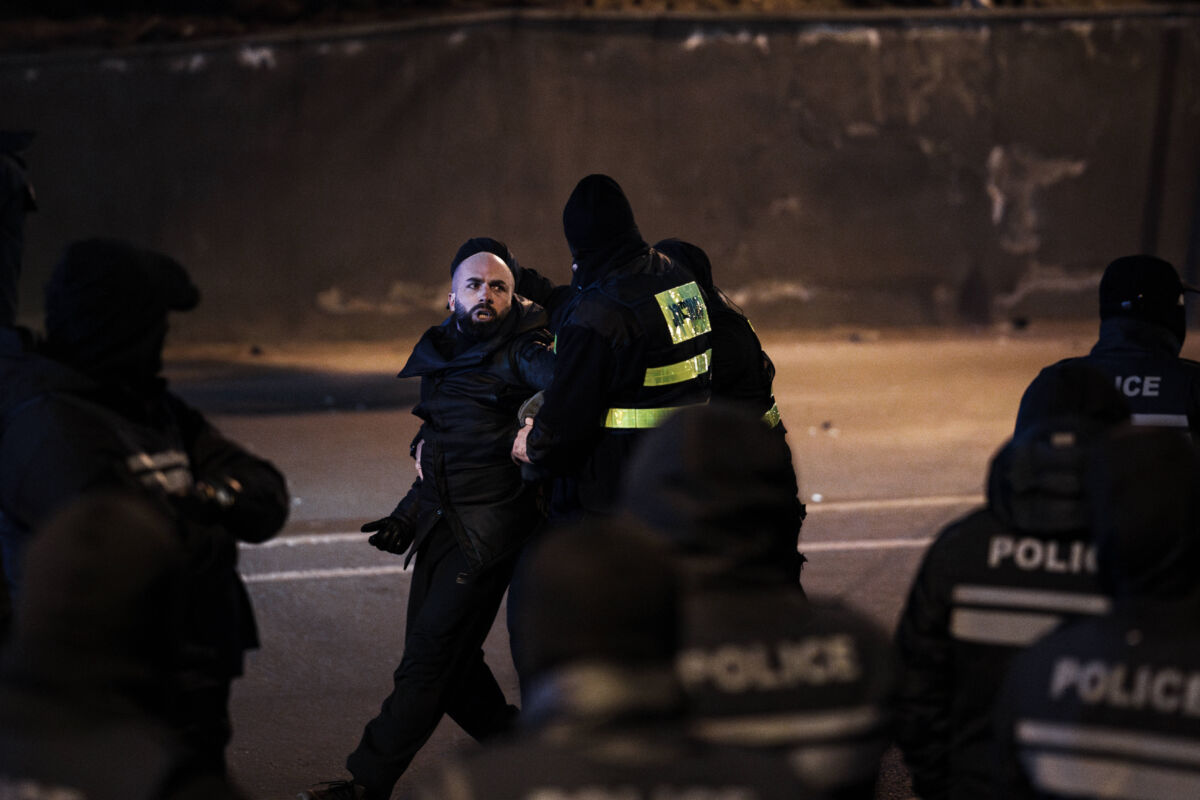Eastern Partnership and Ukraine: the marriage of convenience

This Wednesday, the Eastern Partnership Summit will take place for the first time in four years. On this occasion, Iryna Solonenko, Senior Fellow at the Center for Liberal Modernity, sheds light on the significance of the project specifically from Ukraine’s perspective.
What Eastern Partnership is and is not
When the Eastern Partnership was launched in 2009, Ukraine reacted with a lack of enthusiasm. The initiative had no added value to the already advanced (compared to other EaP members) EU-Ukraine bilateral agenda. Ukraine already negotiated the Association Agreement (AA), including the Deep and Comprehensive Free Trade Area (DCFTA), with the EU and the prospect of the visa-free travel to the Schengen Area was also on the table when the newly launched EaP expanded this offer to all six Eastern neighbours.
Moreover, the EaP did not contain any response to the strategic issue of the prospect of EU membership, which Ukraine has officially aspired to since 1998 (when the national strategy of integration with the EU was adopted). Was the EaP a substitute for potential EU membership or an intermediary step towards it? This was and remains open for interpretations. This lack of strategic vision behind the EaP arguably weakens the EU’s “transformative power” towards the East European neighbours, which is demonstrated in the case of its “big-bang” enlargement (whereby ten Central and Eastern European countries joined the bloc in 2004, followed by Bulgaria and Romania in 2007). This results in visible discrepancy or strong asymmetry between the integration offer (which is weak) and the scope of “homework” of the EaP countries, whereby they have to incorporate into domestic legislation the scope of the EU’s common market acquis close to that of the accession countries. This setup is not sufficiently motivating (if not demotivating) for Ukraine.
On the positive side, it was welcomed that a separate initiative towards Eastern neighbours was launched within a broader European Neighbourhood Policy covering 16 EU neighbours in the East and South. After all, the post-Soviet countries in Eastern Europe did not have much in common with the countries of the South Mediterranean. Moreover, since the initiative was launched as the reaction to the Russian-Georgian war in 2018, one could see this project as having a geopolitical significance, whereby the EU was ready to assume greater responsibility for it Eastern neighbours.
Moreover, if one looks back at the past twelve years, the EaPs people-to-people dimension, which engages broader society beyond the level of authorities, and its financial assistance have a clear added value. The EaP Civil Society Forum, which is the largest umbrella organisation for civil society from the EU and the region, including over 1000 SCOs, has expanded its work way beyond the regular General Assembly’s meetings and has become an important instrument of consolidating the voice of civil society with respect to EU institutions. Also, numerous individuals and organisations from the region benefited from different civil society, researchers, academia, youth and professional exchange, mobility, and cooperation instruments. A lot of success stories at the very down-to-earth level can be told after having examined the programs and their beneficiaries.
Financial assistance, which was first delivered through the European Neighbourhood Instrument (ENP) and now through the global Neighbourhood, Development and International Cooperation Instrument (NDICI) has also important added value. The EU was also quick with offering assistance in view of the COVID pandemics, which broke out in early 2020. The COVID-19 EaP vaccination package increased from an initial Eur30 million to Eur75 million in August this year. Also, the EU’s commitment to providing a Eur2.3 billion Economic and Investment plan in grants could be an important contribution to the economic growth of the EaP countries. The targets for 2025 spanning from support to SME, individual mobility opportunities to health resilience, and digital transformation are very ambitious.
Ukraine’s concerns and priorities
Without underappreciating the importance of various support mechanisms and assistance, which the EU provides within the Eastern Partnership initiative, Ukraine’s key concerns and objectives seem to be better addressed through bilateral relations with the EU, through developing multilateral formats, such as the Associated Trio and bilateral diplomacy towards individual EU member states with the aim of promoting political support within the EU for eventual Ukraine’s membership.
First, Ukraine is striving for deeper integration with the EU. The path between the current level of integration and the eventual EU membership is long and one can think of intermediary steps towards the eventual goal. Even if the membership prospect is not on the table, the philosophy of the current framework of political association and economic integration is in line with the idea of a multi-speed Europe, whereby the EaP partners are offered some elements of what the fully-fledged EU Member States enjoy.
One line of effort is about fully realising the potential of the AA and modernising the AA. When it comes to the first aspect, a consortium of Ukrainian think-tanks identified 15 areas, in which Ukraine has to implement certain commitments to pave the way for the EU decisions on deeper integration. An analysis of the state of play showed that only in two areas, related to certification of agricultural goods and natural gas market, tangible progress has been achieved. So there is still a lot of potentials. As to modernisation of the AA, in 2018 Ukraine and the EU started upgrading the Annexes of the AA In 2021 the comprehensive overview under Art. 481 was launched. The idea is to accommodate the evolving EU legislation and Ukraine’s desire for deeper integration.
The second line is about demanding new formats of integration beyond the current political and legal framework. For instance, while Ukraine has to implement the EU acquis, it is not included in the institutions, where respective discussions and decisions are taken. The option of at least taking part in the consultations in certain policy areas might be an attractive one. Also, accession to limited sectoral ‘unions’ might be an option explored by experts. Therefore, if the political will is there, interesting and attractive solutions can be found.
Second, Ukraine is interested in stronger support on the part of the EU for its sovereignty and territorial integrity, which is addressing Ukraine’s security concerns. When the EaP was launched in 2009, no one could imagine that Russia would go as far as challenging the European security order established after the Cold War ended and even redrawing the states’ borders in Europe with the use of force. Today this has become the reality, which the EU cannot ignore. Eastern Partnership offers no solutions to this problem, although, positively, it envisages efforts to make partner states more resilient when it comes to hybrid security threats, such as disinformation and cyber-attacks. Beyond the EaP, there is a European Union Advisory Mission to Ukraine, dealing with the civilian security sector. However, there are discussions in the EU on a possible new military CSDP mission to Ukraine, initiated by Lithuania. Also, Ukraine declared its interest in cooperation within the framework of the Permanent Structured Cooperation (PESCO), whereby projects with individual EU MSs can be implemented. On top of that, Ukraine has agreements with individual MSs on direct military assistance with Lithuania and Poland being most active in this respect.
Third, promoting rule of law and other important reforms is a key issue. Despite the lack of political will for important reforms and strong actors, who block reforms, the quest for these reforms is deeply entrenched in Ukraine. It is not only about civil society demanding reforms, but one can speak of reform-minded enclaves among public authorities, including bureaucracy, local self-governance, academia, etc. It has been widely recognised that promoting rule of law is the key reform for the overall transformation of the country and for attracting foreign investments. Yet, the EU lacks clear guidelines and a monitoring system to foster rule of law reforms. Certain important reforms in fighting corruption and judiciary reform were initiated due to conditionality, linked to visa liberalisation or financial support. Yet, the leverage remains weak if guidelines are too weak and no specific and credible incentives are linked to reform demands. The way to go, suggested by Ukraine’s civil society, would be using the EU Justice Dashboard methodology and the EU Rule of Law report to measure the progress of judicial reform and the fight against corruption. Yet, the question of specific incentives (like the one of visa-free travel) is still open.
New foreign policy priorities
Apart from bilateral relations with the EU, Ukraine has recently started exploring multilateral formats and direct diplomacy towards individual EU MSs. The most prominent initiative so far has been that of the Association Trio. It was officially launched in May 2021, when the Ministers of Foreign Affairs of Georgia, Moldova, and Ukraine met in Kyiv and signed the Memorandum of Understanding. Looking for options of integration with the EU beyond the AA/DCFTA and enhancing security cooperation with the EU are among the key objectives of the initiative. The initiative received further development, as the heads of states of the three countries met in Batumi in July 2021, where they signed a joint Declaration, which emphasised the quest of the three countries for the EU membership perspective. Importantly, the European Council President Charles Michel was there and welcomed the Trio’s intention to “foster coordination” between each other and the EU. The Joint Statement following the EU-Ukraine Summit in October 2021 “took good note of the initiative of the three associated partners aiming at increased coordination between them and enhanced cooperation between the three associated partners and the EU”. While the EU is still reluctant to embrace the initiative and, more importantly, establish institutionalised formats of cooperation, the idea of multilateral cooperation with the purpose of European integration is not new. The Visegrad 4 format and the different formats of cooperation among the three Baltic states established in the 1990s pursued exactly the idea of coordinating efforts towards preparing for the EU’s membership. Therefore it would be important for three countries to go ahead with deepening cooperation and for the EU to establish this additional track without jeopardising the EaP as an umbrella.
Kyiv also activated its diplomacy vis-à-vis individual EU Member States with the purpose of consolidating support within the EU for the prospect of EU membership. By now already six EU member states confirmed their support for Ukraine’s membership in the EU through bilateral declarations: the three Baltic states, Poland, Slovakia, and most recently Croatia.
One can also add the Lublin Triangle , an initiative of Poland and Lithuania to promote European and Euro-Atlantic integration of Ukraine. The respective declaration on the level of the three foreign ministers was signed in July 2020. This initiative is very much in line with Ukraine’s recently revitalised foreign policy objective of establishing itself as a Central European state. From this perspective, the stronger voice and activities from Ukraine, when it comes to multilateral cooperation in Central Europe, are expected in the near future.
![]()
Did you like thike this article? If yes, you can support the independent editorial work and journalism of LibMod via a simple donation tool.
We are recognized as a non-profit organization, accordingly donations are tax deductible. For a donation receipt (necessary for an amount over 200 EUR), please send your address data to finanzen@libmod.de
Related topics
Newsletter bestellen
Stay tuned with our regular newsletter about all our relevant subjects.





